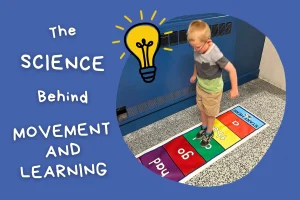Buch et al., Consolidation of human skill linked to waking hippocampo-neocortical replay, Cell Reports, June 8, 2021, DOI: 10.1016/j.celrep.2021.109193.
Erin Kaye Howie, Michael W. Beets, Russell R. Pate, Acute classroom exercise breaks improve on-task behavior in 4th and 5th grade students: A dose–response, Mental Health and Physical Activity, Volume 7, Issue 2, 2014, Pages 65-71, ISSN 1755-2966, https://doi.org/10.1016/j.mhpa.2014.05.002.
Immordino-Yang, M. H., Christodoulou, J. A., & Singh, V. (2012). Rest Is Not Idleness: Implications of the Brain’s Default Mode for Human Development and Education. Perspectives on Psychological Science, 7(4), 352-364. https://doi.org/10.1177/1745691612447308.
Jordan A. Carlson, Jessa K. Engelberg, Kelli L. Cain, Terry L. Conway, Alex M. Mignano, Edith A. Bonilla, Carrie Geremia, James F. Sallis,
Implementing classroom physical activity breaks: Associations with student physical activity and classroom behavior, Preventive Medicine, Volume 81, 2015, Pages 67-72, ISSN 0091-7435, https://doi.org/10.1016/j.ypmed.2015.08.006.











